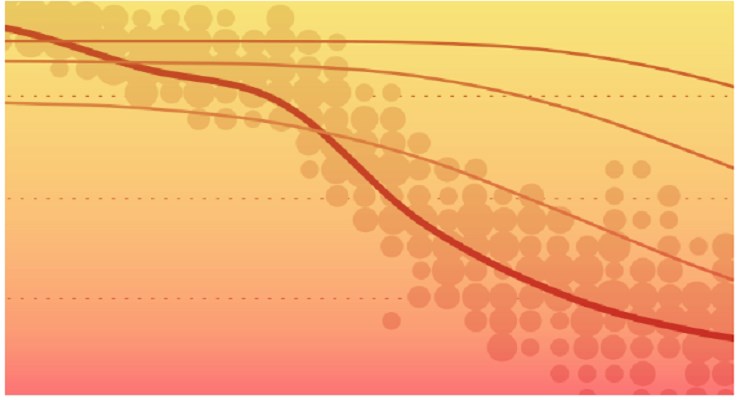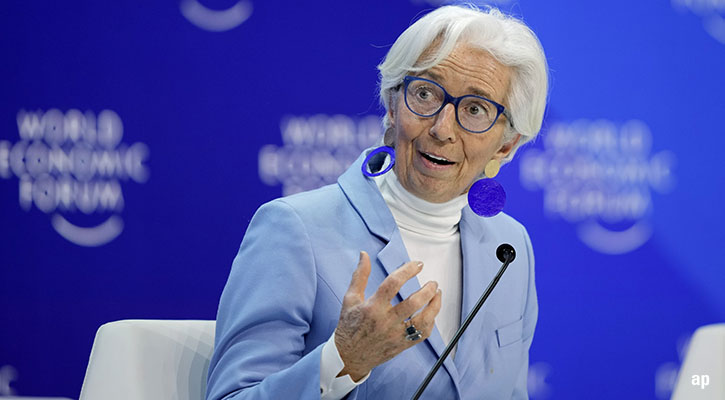Visse detaljer i videoen fokuserer på det amerikanske markedet, men de generelle temaene er fortsatt verdt å merke seg og fokusere på i norsk kontekst.
Jason Stipp: I'm Jason from Morningstar. Despite some outflows in recent times, we know investors still own a lot of bonds and increasingly maybe some different kinds of bond funds than they owned in the past. So, how do you know if your bond fund is one worth holding on to? Here to offer some bad signs for bond funds is senior analyst Eric Jacobson, from Morningstar.
Eric, thanks for calling in.
Eric Jacobson: Glad to be with you, Jason.
Stipp: You have a few signs that might give you pause if you notice them in your bond fund. It would be reason for further exploration. I find the first one pretty interesting. You say that a bad sign potentially for a bond fund is too much yield. I thought that’s what I was looking for when I was looking for a bond fund.
Jacobson: It's one of those things that is a signal of risk that you are taking, rather necessarily than return potential. I think that’s unfortunately one of the things that confuses a lot of people because they think that yield is what they are going to get. But in the context of a fund investment where the price of your investment can actually go up and down, the yield is really just what the fund is paying out at this particular moment in terms of income or, in the case of the way we publish a lot of the data at Morningstar, what the fund earned over the last 12 months.
It doesn't account for what's going to happen to the price of your investment going forward. When you add that together with the fact that that income is usually tied--in fact, it's always tied--to how much risk you are taking on, you want to be careful because if you compare a bunch of investments together the one with the highest yield is almost by definition taking on the most risk.
Stipp: When you are looking for a benchmark on whether this fund's yield is perhaps unusually high, should I look at the category average for yield or how do I know what's maybe suspiciously high?
Jacobson: I would say more than one thing would be helpful. Certainly, the category average is a very good place to start. Depending on the kind of category you are looking at, there may or may not be a good benchmark for it, for example.
In the past, if you had a core bond fund, the place to look would have been the Barclays U.S. Aggregate Bond Index as we've talked about before and written in some pieces on Morningstar.com. The index is increasingly looking a little bit different than the average fund and vice versa.
So, it really does probably pay to look at the category average a little more carefully if you can.
Stipp: Eric, in today's environment, for a core bond fund, what kind of yield level would cause you to raise an eyebrow?
Jacobson: If you look at the median roughly of funds in our intermediate-term bond category, which is sort of the main home for core and what we might call core plus bonds that take on a little bit more sector risk, you are looking at just under about 3%.
There is a little bit of a range around that. Some funds certainly can justifiably yield more than that, but once you start to get into the mid-3's and higher, you want to understand what's going on. There may be very good reasons why a fund is yielding more. But you want to start to be careful once you get up in those ranges and at least, if you can, try to understand what's generating that extra income.
Stipp: Second potentially bad sign for a bond fund or one worth further investigation, you say, is concentration. So, having a lot of assets in one particular area of the bond market. Which specific kinds of areas or is it any area of concentration that might be a potential concern?
Jacobson: Sure. Well, it's not uncommon as a baseline just to say that you might have a fund with a lot of Treasuries or a lot of mortgages because they're government-backed and they're considered to be safer. There's nothing inherently wrong with that as long as you understand especially what the interest-rate risks of those portfolios look like. But as soon as you look in pretty much any other area, you want to start to see how much concentration you have, especially relative to the broader market.
So, you might, for example, see a lot of corporates in a core bond fund. Normally, once you get above 20%, 30%, now you're starting to look at something that's a bigger bet--not necessarily a bad thing by definition, but you're starting to take on more risk than other core funds, at least.
One area that--just as some examples that we've seen in the past--around the time of the credit crisis, one of the big most popular bets was commercial mortgage-backed securities. Now, those are a relatively small part of the market, but a lot of funds were barreling into this sector because it started to look cheap early on in 2008 in particular and then a lot of funds got caught flat-footed with that sector later on in the year, and they were just way overexposed.
Today, we're looking at areas that funds have had similar experiences with, and the big one in the last several months has been Puerto Rico, in the municipal-bond marketplace anyway. A lot of funds had taken on extra exposure to Puerto Rico because the island offers some tax advantages for funds--for certain individuals. Single-state funds, in particular, can supplement their income with Puerto Rico bonds because they're still tax-free in the states. But as soon as the commonwealth started to run into some financial stress--additional financial stress, I should say--over the summertime, that really created a lot of problem for funds.
<TRANSCRIPT>
Stipp: Next possible warning sign is if your fund is taking on too much leverage. Can open-end funds take on a lot of leverage, and how would you know if your fund is taking on leverage?
Jacobson: That's, I think, an old misconception, unfortunately that still hangs out there a little bit, which is the idea that they can't take on leverage. And the fact is that historically very few others did, but we've started to see more and more leverage creep into the mutual fund universe in the last several years.
There are a couple ways they can do it. The most basic way is simply to borrow money much like you might do with a closed-end fund, or personally investing on margin, for example.
The easy way to tell that usually is to take a look in your fund report, whether it's your semiannual or your annual report, and see if the total investments are significantly higher than the net assets. It sounds a little detailed probably, but if you just look at the very end of the list of investments in your portfolio you can see that.
You want to sort of look at that more carefully and figure out how much risk is being taken on, but generally, if you hit that and it causes a problem for you and you think it's too much, you probably want to either call your financial advisor or call the mutual fund company directly if you're investing on your own and see if you can get a better explanation for it.
The other way that you can do it is through derivatives. Now, unfortunately, that's a little bit more complicated to figure out because of the way that they're typically listed in the reports. But, the same thing, I guess, holds true, which is that if you look in the fund and you see a lot of derivatives, I would definitely reach out to an advisor or to the fund company and ask for some explanation about how they're using them.
Stipp: Can you say, Eric, whether it's yield that seems to be higher than average or a certain kind of concentration in area of the market, or a leverage that's out of the norm that a broad warning sign is to look for extremes in your bond funds. So, we do know that active managers will place bets and they'll do so intentionally, but you're saying if something looks extreme, definitely dig below the surface.
Jacobson: Absolutely. And I think the reason for that is that it's a very competitive marketplace among bond managers to gather assets and the extremes are often places that managers will go in order to try and differentiate themselves from their peers. There is a good reason that a manager might take a contrarian bet, for example, but once they start to do it for the purpose of differentiating themselves, solely for that purpose--you often start to see that in, like I said before, as you said concentrations, more leverage, more yield, and whatever way that they're earning it ... and if you see a fund that's way out at the edge of its category, you definitely want to take a closer look at it. It isn't always a bad thing. There are some good core plus funds that we look at in the intermediate-term bond category that have taken advantage of very undervalued securities over the last couple of years and we think that those are valid strategies. But you want to make sure that your fund company is explaining it to you and that you're comfortable with what they are doing.
Stipp: Last bad sign for bond funds, Eric, is maybe the best one to keep on your radar, at least first, is expenses, high expenses, fund that costs too much, particularly important in the bond-fund categories.
Jacobson: That's right. I think most people that follow Morningstar know that we talk about this all the time and certainly the first thing that comes to mind is the fact that the more you pay, the less you're going to make and that's certainly a big, big reason to keep on top of expenses, especially when interest rates are relatively low and every dollar that you're paying in expenses is taking away a dollar of your return.
But the other reason that it's really important in bond funds is that managers who have higher expense ratios on their funds, which by the way they are probably not responsible for, feel extra pressure because they've got to take on more risk typically just to beat that expense ratio to begin with, much less beat their peers on a net basis after all the total returns and costs are taken into account. We've seen this over the years very often, the fact that higher-cost funds definitely have to take on more risk if they want to compete.
Stipp: Eric, good benchmarks for knowing whether your fund is expensive or not?
Jacobson: It differs depending on the category, but your average intermediate-term bond fund, if you don't have loads and distribution costs built in, probably shouldn't cost more than say 70 basis points or 0.70%. There are cases in which you could probably justify getting more expensive than that on a one-off basis, but for the most part I would call that sort of a starting place to look at. You definitely want to feel like you're really getting something for your money, if you're paying much more than that.
Stipp: Eric, thanks for helping us be better bond fund investors and for those insights today.
Jacobson: It's my pleasure, Jason. Thanks. Glad to be with you.
Stipp: From Morningstar, I'm Jason Stipp. Thanks for watching.





















